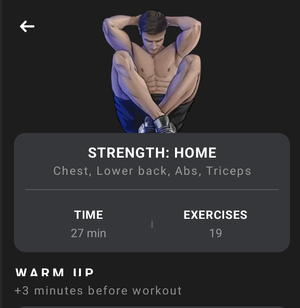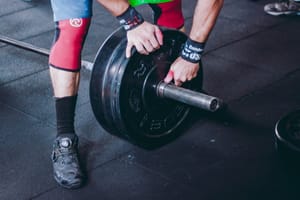
Smarter. Smoother. Faster. Be The First To Try The New Dr. Muscle
Meet Dr. Muscle X: The Future of AI Personal Training. Early Preview Now Open.

Meet Dr. Muscle X: The Future of AI Personal Training. Early Preview Now Open.

Power meets simplicity. Innovation meets iron. Right on your wrist.

No hype, no gimmick—just science-backed workouts that grow with you using AI

An honest look at MacroFactor and results from 9 users of the app: is it worth it in 2025?


Honest look with pros and cons, screenshots, price, and more
Hypertrophy functional training is a specialized approach that combines the principles of muscle growth with functional movement patterns. Unlike traditional bodybuilding, which often emphasizes isolation exercises and aesthetics, hypertrophy functional training focuses on developing strength and muscle size while enhancing overall physical performance. This method incorporates multi-joint movements that mimic
Hypertrophy, the process of muscle growth through an increase in the size of muscle fibers, is a fundamental concept in strength training and fitness. In the context of CrossFit, hypertrophy plays a crucial role in enhancing performance across various domains, including strength, endurance, and overall athleticism. While CrossFit is often
Hypertrophy refers to the increase in the size of muscle fibers, which occurs as a result of resistance training and other forms of mechanical overload. This physiological process is primarily driven by the body’s adaptation to the stress placed upon it during exercise. When muscles are subjected to tension,
Hypertrophy training is a specialized form of resistance training aimed at increasing muscle size and mass. This approach typically involves performing exercises with moderate to heavy weights, focusing on a rep range of about 6 to 12 repetitions per set. The underlying principle of hypertrophy is to create micro-tears in
Triceps hypertrophy refers to the increase in size and strength of the triceps brachii muscle, which is located at the back of the upper arm. This muscle is composed of three distinct heads: the long head, lateral head, and medial head. Each of these heads plays a crucial role in
Hypertrophy training, characterized by high-volume resistance exercises aimed at increasing muscle size, plays a pivotal role in enhancing athletic performance, particularly in activities that require explosive power, such as the vertical jump. The vertical jump is a critical measure of an athlete's explosive strength and overall athleticism, often

Banded hammer curls are a dynamic and effective exercise that targets the biceps and forearms while incorporating resistance bands to enhance the workout's intensity. This variation of the traditional hammer curl utilizes elastic bands to provide constant tension throughout the movement, which can lead to improved muscle engagement
The deadlift is a compound exercise that engages multiple muscle groups, making it a cornerstone of strength training and hypertrophy-focused programs. It primarily targets the posterior chain, which includes the glutes, hamstrings, and lower back, but also recruits the quadriceps, core, and upper body muscles. This multi-joint movement not only

The barbell biceps curl is a fundamental exercise that primarily targets the biceps brachii, the prominent muscle located at the front of the upper arm. This exercise is not only a staple in bodybuilding routines but also serves as a foundational movement for anyone looking to enhance their upper body

The calf muscle, primarily composed of the gastrocnemius and soleus muscles, plays a crucial role in various movements and activities. The gastrocnemius, the larger and more visible muscle, has two heads that originate from the femur and insert into the Achilles tendon. This muscle is primarily responsible for plantar flexion